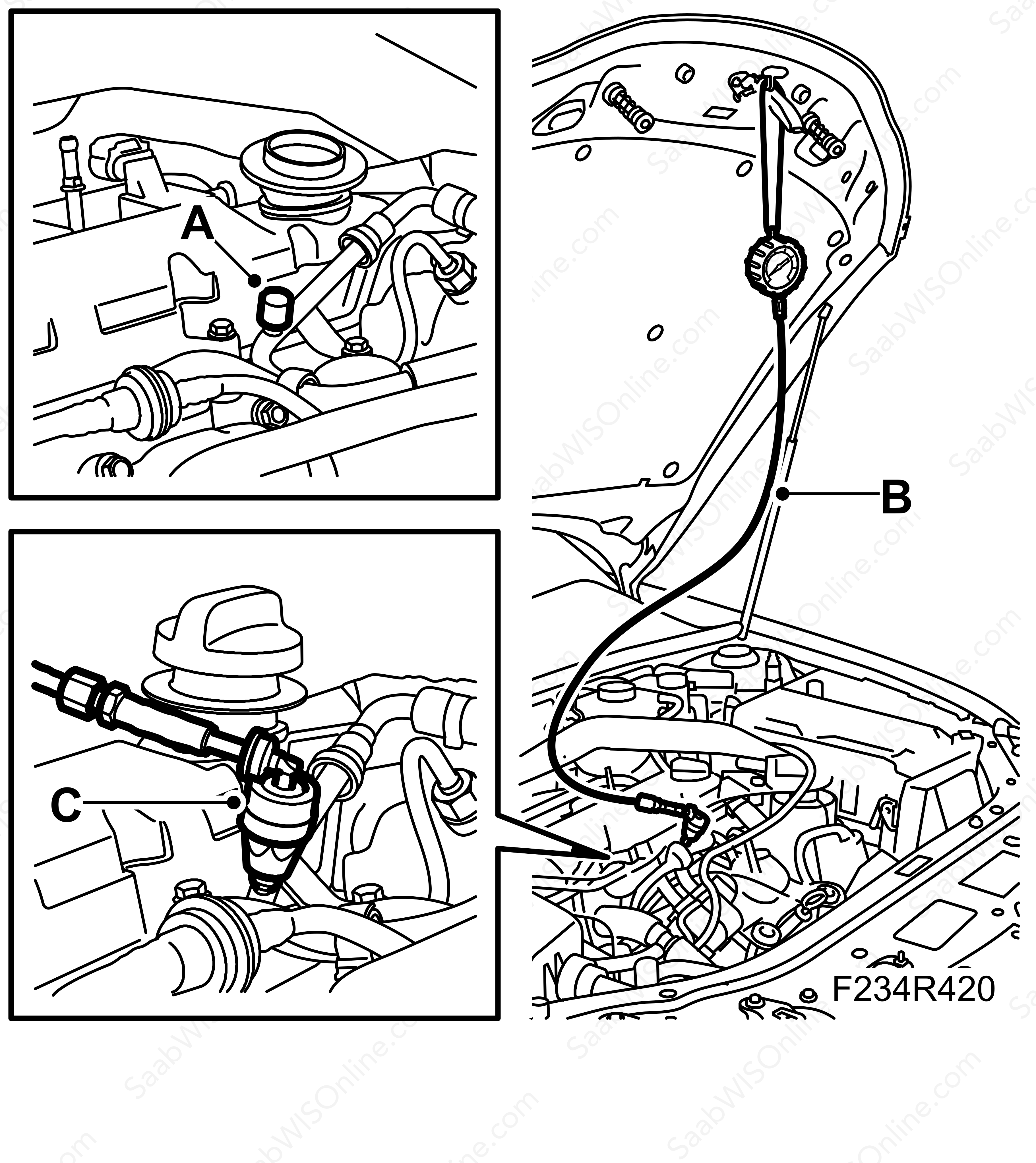Checking fuel pressure, A20NFT/LHU
|
|
Checking fuel pressure, A20NFT/LHU
|
 Warning
Warning
|
|
Work with pressure measuring equipment involves dismantling the car's fuel system. The following points must therefore be observed while taking this action:
|
|
•
|
Ensure good ventilation! If there is approved ventilation for extraction of fuel fumes then this must be used.
|
|
•
|
Wear protective gloves! Prolonged exposure of the hands to fuel can cause irritation of the skin.
|
|
•
|
Have a fire extinguisher suitable for flammable liquids and electrical equipment at hand! Be aware of the risk for sparks, i.e. in connection with circuit breaking, short-circuiting, etc.
|
|
•
|
Absolutely No Smoking!
|
|
•
|
Wear protective safety glasses.
|
|
|
|
|
|
|
1.
|
Remove the engine cover.
|
|
3.
|
Connect the diagnostic tool.
|
|
4.
|
Start the car. If the car does not start, see point 6.
|
|
5.
|
Read off "Fuel line pressure" from the diagnostic tool. Compared with "Required fuel line pressure" from the ECM (A).
See table.
The pressure must not differ by more than 50 kpa.
If this is correct: Compare "Fuel line pressure" with an external pressure gauge, there should be a difference of no more than 50kPa.
A:
"Required fuel pressure" from the ECM (kPa)
B:
Approved pressure (kPa)
|
|
6.
|
If the car does not start:
|
|
|
•
|
Cycle the ignition (on/off/on), see read values in diagnostic tool (SCM): Fuel line pressure must be more than 300kPa.
|
|
|
•
|
If this is correct: Compare "fuel line pressure" with an external pressure gauge, there should be a difference of no more than 50kPa.
|
|
7.
|
“Safety on” the adapter and remove the pressure measuring equipment from the service nipple. Wipe up any fuel spill with a rag.

|



 Warning
Warning

